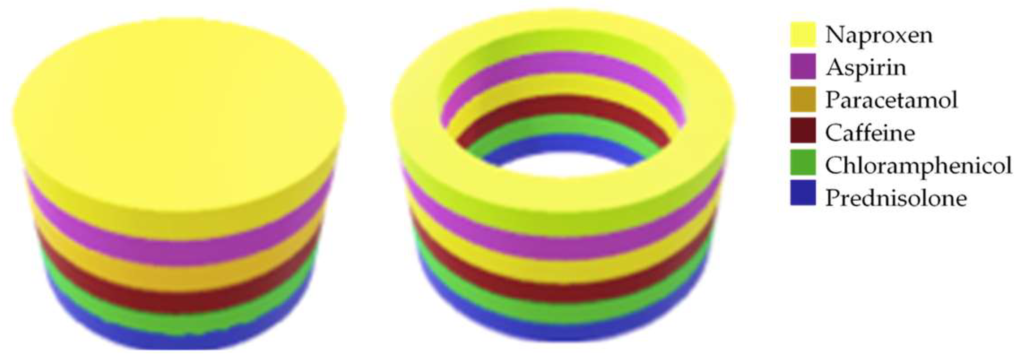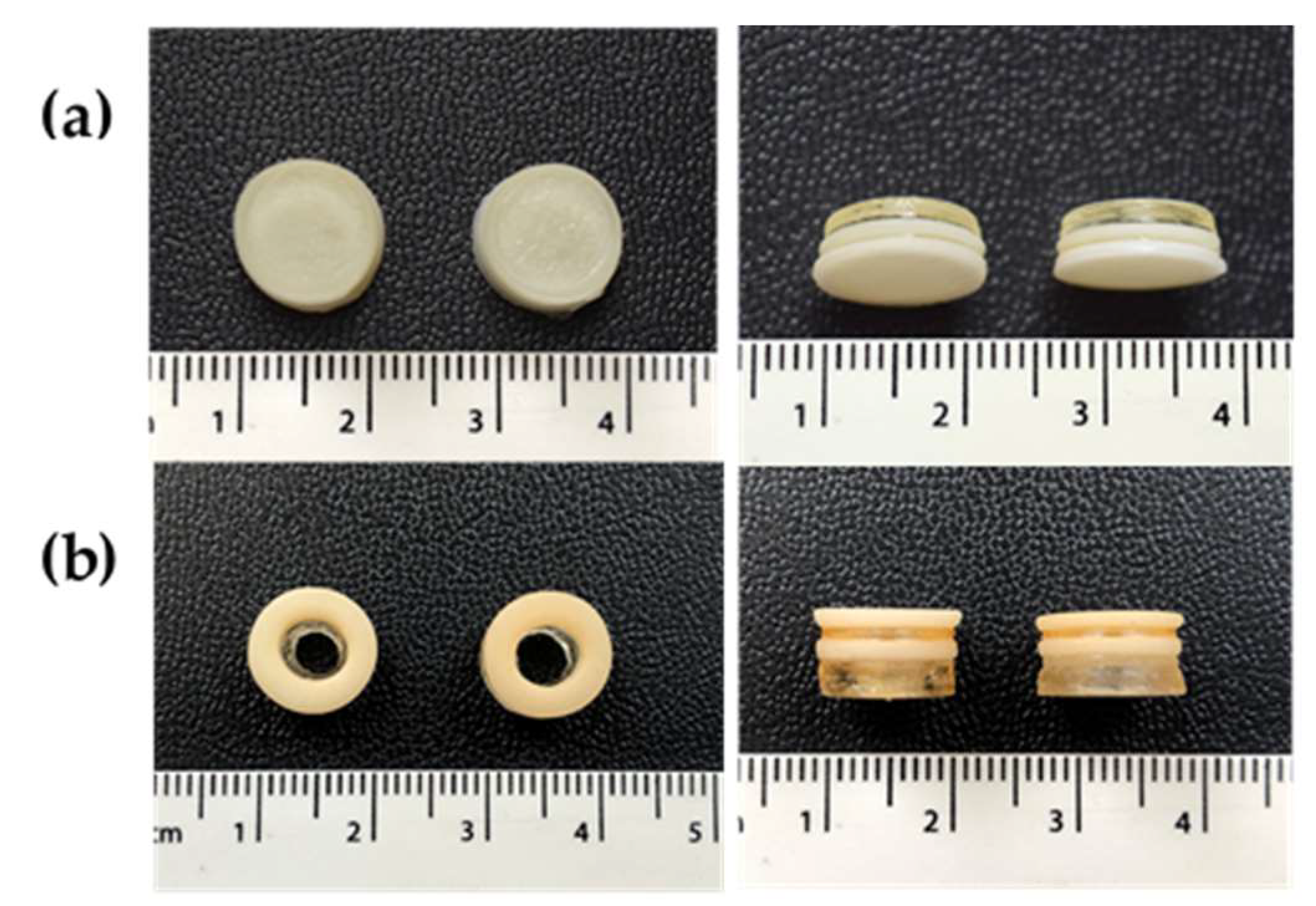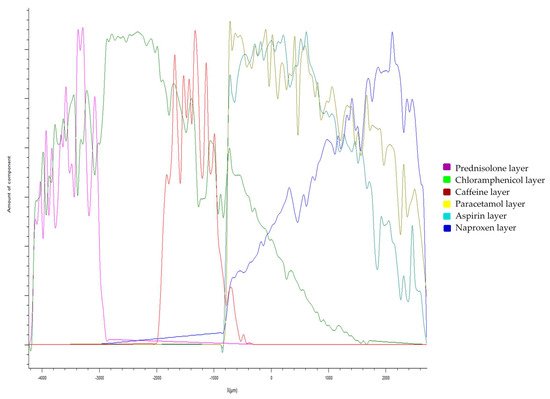In the recently published ‘3D Printing of a Multi-Layered Polypill Containing Six Drugs Using a Novel Stereolithographic Method,’ international researchers explore the potential of 3D printing in the pharmaceutical industry. While this is certainly not a new topic, here the researchers have developed a new stereolithographic (SLA) 3D printing method to fabricate multi-layered polypills with different types of drug content—and also in different shapes.
The team of authors printed six different drugs overall:
- Paracetamol
- Caffeine
- Naproxen
- Chloramphenicol
- Prednisolone
- Aspirin

3D designs of the printlets. Type I: Cylinder (left, 10 mm diameter and 3 mm height), Types II and III: Ring (right, 10 mm diameter and 6 mm height).
As multiple drug therapies continue to garner attention due to success in treatment for diseases like HIV-1, high blood pressure, type II diabetes, tuberculosis, and more, polypharmacy is a ‘pressing prescribing issue.’ Patients have difficulty managing multiple medications, and it is easy to see why.
“Such challenges can be overcome by utilizing fixed-dose combinations (FDCs) or polypills, whereby more than one drug is incorporated into the same drug product,” explain the researchers. “Indeed, the commercially available polypill (PolycapTM), which contains enteric-coated aspirin, ramipril, simvastatin, atenolol, and hydrochlorothiazide, has been shown to be effective in reducing multiple cardiovascular risk factors.”
The greatest difficulty holding companies back from manufacturing FDCs is the difficulty in production, conventionally, and rigidity in dosing:
“For example, if a patient requires a change in dose and/or drug whilst maintained on a FDC, often the treatment will have to be withdrawn and the patient would be initiated on separate dosage forms,” said the researchers.
With the possibility of using 3D printing, however, new options abound for designing pills in different shapes and offering patient-specific treatment. With 3D printed pills, materials can be included in a single medication, however, each type of drug is separated—meaning that dosages can be adjusted. FDM 3D printing is popular for creating drug-loaded structures, with SLA still ‘relatively unexplored.’
In this study, the researchers overcome challenges in SLA printing by creating a printer able to produce multi-layered tablets:
“Critically, this work has generated a new SLA pharmaceutical printing process, revolutionising the manufacture of polypills and treatment pathways for patients,” stated the researchers.
All printlets were created using a modified Form 1+ SLA 3D printer. Three forms were made:
- Type I: Cylinder shape
- Type II: Ring shape
- Type III: Ring shape with a soluble filler (PEG 300)

Polypill printlet (a) Type I (cylinder shape) and (b) Type II (ring shape). The Type III formulation was visually identical to Type II, and hence, has not been included here. The scale is in cm.

Drug dissolution profiles for the 3D printed polypills: (a) Type 1 cylindrical polypill; (b) Type II ring-shaped polypill; and (c) Type III ring-shaped polypill + PEG 300.
During printing, it was possible to pause the process if necessary, with the user removing the resin tray and putting different resins in its place. Numerous variations of polypill geometries were created. The amorphous drugs were found to diffuse more easily, while the others continued to remain in their layers.
“Due to the cross-linking of the monomers within the polymeric matrix, the “dry” polypill exhibited a compact surface under SEM imaging, whereas several pores were visible on the surface of a swollen polypill exposed to dissolution medium. These results highlight that the mechanism for drug release from SLA tablets is via diffusion of the water into the printlet, followed by the solubilisation and diffusion of drug through micropore channels within the polymeric matrix.
“Although the drug formulations were suitable for 3D printing, further research is needed to determine the most optimal printer settings for each formulation to achieve accurate dimensions, and thus dosing, and for achieving specific drug release profiles when required. Crucially, this study shows the potential of SLA 3D printing for fabricating multi-layered polypills to improve personalisation for patients,” concluded the researchers.
3D printing of medications is becoming a huge topic of interest for pharmaceutical companies, doctors, patients, and others interested in medical treatment, from accelerated drug release to increased customization and personalization, and more.
What do you think of this news? Let us know your thoughts! Join the discussion of this and other 3D printing topics at 3DPrintBoard.com.

Drug distribution profiles in the Y-dimension of the polypill showing the diffusion between layers in the paracetamol, aspirin, and naproxen layers, with a tight distribution in the caffeine and prednisolone layers.
Subscribe to Our Email Newsletter
Stay up-to-date on all the latest news from the 3D printing industry and receive information and offers from third party vendors.
You May Also Like
3D Printing News Briefs, May 25, 2024: 3D Printed Medical Models, Sensors, Engines, & More
We’re starting with research in today’s 3D Printing News Briefs, first about filament diameter-adjustable 3D printing and then about 3D printed sensors. Then, we’re moving on to personalized 3D printed...
BMW’s 3D Printed Robot Grippers Cut CO2, Improve Efficiency
The BMW Group has been a long-time user of additive manufacturing (AM), dating back to the days when it was still referred to as rapid prototyping. However, its most recent...
New AM Research Market Brief: China to See $8B in 3D Printing Hardware Sales by 2032
China’s additive manufacturing (AM) market is expected to reach $8 billion a year in hardware sales by 2032, according to a new Market Opportunity Brief by Additive Manufacturing (AM) Research,...
Creality Begins Selling HALOT-MAGE S: Setting New Standards in Precision 3D Printing
Creality, a leading innovator in consumer-grade 3D printing technology, proudly introduces the HALOT-MAGE S, the latest breakthrough in high-resolution 3D printing. With its cutting-edge features and user-centric design, the HALOT-MAGE...


































